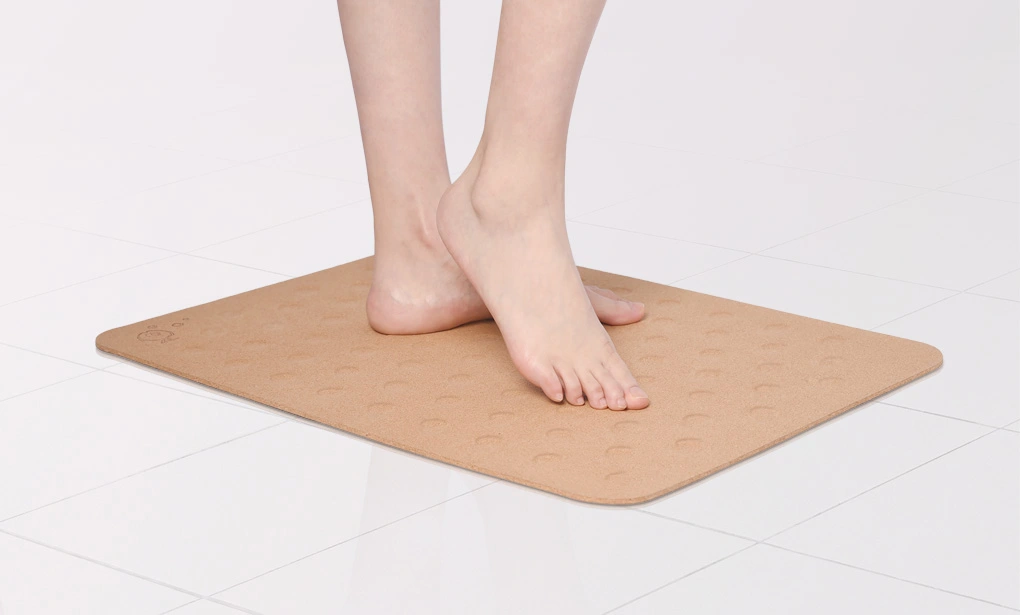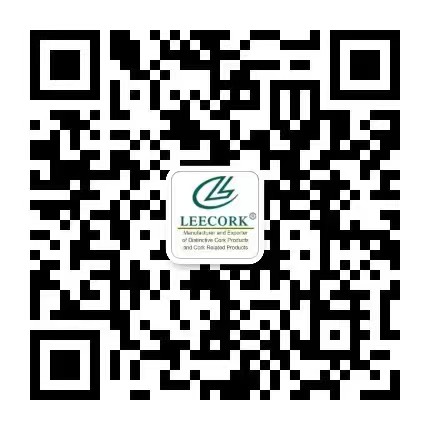Why Cork Bathroom Mats Are Revolutionizing Eco-Friendly Bathroom Design
2025-07-28 15:49:14
Step into the future of sustainable bathroom decor with the innovative cork bathroom mat. These eco-friendly alternatives are transforming how we think about bathroom accessories, combining style, functionality, and environmental consciousness. Cork, a renewable resource harvested from the bark of cork oak trees, offers a unique blend of natural beauty and practical benefits that make it an ideal choice for bathroom flooring solutions. Unlike traditional synthetic mats, cork bathroom mats provide superior moisture resistance, antimicrobial properties, and a comfortable, non-slip surface – all while maintaining a minimal environmental footprint. As consumers increasingly prioritize sustainability in their home design choices, cork mats are emerging as a frontrunner in the eco-friendly bathroom revolution. Their ability to merge luxury with responsibility is capturing the attention of environmentally conscious homeowners, interior designers, and eco-lodges alike. Let's dive into why these versatile mats are becoming the go-to choice for those seeking to create a greener, more stylish bathroom space.

Cork vs. Traditional Mats: Sustainability Showdown
When it comes to choosing bathroom mats, the environmental impact is a crucial factor for many consumers. Cork bathroom mats stand out as a beacon of sustainability in comparison to their traditional counterparts. Let's break down the eco-credentials that make cork mats a superior choice:
Renewable Resource
Cork is harvested from the bark of cork oak trees, which regenerates every 9-12 years without harming the tree. This makes cork a highly renewable resource, unlike synthetic materials used in conventional mats that often rely on non-renewable petroleum-based products.
Biodegradability
Natural cork bath mats are fully biodegradable at the end of their lifecycle. In contrast, many traditional mats made from synthetic fibers can take hundreds of years to decompose, contributing to landfill waste.
Carbon Footprint
The production of cork mats has a significantly lower carbon footprint compared to synthetic alternatives. Cork oak forests act as carbon sinks, absorbing millions of tons of CO2 annually, further offsetting the environmental impact of production.
Water Conservation
Cork's natural water-resistant properties mean that these mats require less frequent washing than fabric mats, conserving water and energy over their lifespan.
Chemical-Free
Unlike many synthetic mats that may contain harmful chemicals or off-gas VOCs (Volatile Organic Compounds), cork mats are naturally free from toxic substances, promoting a healthier indoor environment.
The sustainability showdown clearly favors cork mats, making them an excellent choice for environmentally conscious consumers looking to reduce their ecological footprint without compromising on quality or style.
Moisture-Resistant Magic: Cork's Hidden Superpowers
One of the most remarkable features of cork bathmats is their inherent ability to resist moisture – a crucial trait for any bathroom accessory. This natural superpower sets cork apart from traditional materials and contributes significantly to its rising popularity in bathroom design. Let's explore the moisture-resistant magic of cork:
Cellular Structure
Cork's unique cellular composition is the key to its moisture-resistant properties. The material consists of millions of tiny air-filled chambers, which create a natural barrier against water penetration. This structure allows cork to repel moisture while remaining breathable.
Quick-Drying Capabilities
Even when exposed to water, cork dries remarkably quickly. This rapid-drying ability helps prevent the growth of mold and mildew, common issues with traditional fabric bath mats that tend to stay damp for extended periods.
Antimicrobial Properties
Cork contains a natural substance called suberin, which gives it antimicrobial properties. This means that cork bathroom mats naturally resist the growth of bacteria and fungi, contributing to a more hygienic bathroom environment.
Odor Resistance
Thanks to its moisture-resistant and antimicrobial qualities, cork effectively combats odor-causing bacteria. This results in a fresher-smelling bathroom without the need for artificial fragrances or frequent washing.
Durability in Wet Environments
Unlike some materials that deteriorate when repeatedly exposed to moisture, cork maintains its integrity and appearance even in the humid bathroom environment. This durability translates to a longer-lasting product, reducing the need for frequent replacements.
The moisture-resistant properties of cork make it an ideal material for bathroom mats, offering practical benefits that go beyond mere water resistance. Its ability to create a drier, cleaner, and more hygienic bathroom space is truly revolutionary in eco-friendly bathroom design.

From Tree to Tub: The Eco-Journey of Cork Mats
Understanding the journey of cork from its natural habitat to your bathroom floor reveals the truly sustainable nature of cork bathroom mats. This eco-journey is a testament to the material's environmental credentials and the thoughtful process behind creating these innovative bathroom accessories.
Sustainable Harvesting
The journey begins in cork oak forests, primarily found in Mediterranean regions. Cork is harvested by skilled workers who carefully strip the outer bark from the trees without causing harm. This process occurs every 9-12 years, allowing the tree to regenerate its bark naturally.
Minimal Processing
After harvesting, the cork undergoes minimal processing to transform it into bathroom mats. The bark is boiled to remove impurities and increase flexibility, then pressed into sheets. This process requires little energy and produces virtually no waste, as even cork dust is collected and used in other products.
Eco-Friendly Manufacturing
The production of cork mats often incorporates sustainable practices. Many manufacturers use renewable energy sources and implement water recycling systems to minimize their environmental impact. The natural properties of cork eliminate the need for harmful chemical treatments commonly used in synthetic mat production.
Sustainable Packaging and Transport
Eco-conscious manufacturers often use recycled or biodegradable materials for packaging cork mats. The lightweight nature of cork also contributes to reduced transportation emissions compared to heavier materials.
Long Lifespan and Biodegradability
Once in your bathroom, cork mats offer a long service life due to their durability and resistance to wear. At the end of their lifecycle, these mats can biodegrade naturally, returning to the earth without leaving a lasting environmental footprint.
The eco-journey of cork mats from tree to tub exemplifies a circular, sustainable approach to product creation. By choosing cork bathroom mats, consumers support not only an eco-friendly product but also an entire ecosystem of sustainable practices that benefit both local communities and the global environment.

Conclusion
The revolution in eco-friendly bathroom design is here, and cork bathroom mats are leading the charge. Their unparalleled sustainability, moisture-resistant properties, and eco-conscious journey from harvest to home make them a standout choice for environmentally aware consumers. By choosing cork, you're not just selecting a bathroom accessory; you're making a statement about your commitment to sustainable living and innovative design.
Ready to transform your bathroom with the eco-friendly magic of cork? Xi'an Leecork Co., Ltd. has been at the forefront of cork product manufacturing since 2002, serving a global market with high-quality, sustainable cork solutions. Our cork bathroom mats are loved by customers in over 50 countries, from eco-conscious homeowners in Germany and France to cutting-edge designers in the USA and Japan. Join our community of satisfied clients, many of whom have been with us since our founding, and experience the difference that true sustainability can make in your home.
For more information on our cork bathroom mats and other innovative cork products, please don't hesitate to reach out. Contact us at info@leecork.com to start your journey towards a more sustainable, stylish bathroom today.
References
1. Silva, S. P., et al. (2005). Cork: properties, capabilities and applications. International Materials Reviews, 50(6), 345-365.
2. Pereira, H. (2007). Cork: Biology, Production and Uses. Elsevier Science.
3. Gil, L. (2015). New Cork-Based Materials and Applications. Materials, 8(2), 625-637.
4. Knapic, S., et al. (2016). Natural Cork Agglomerate as an Ecological Alternative in Interior Design. Proceedings of the Institution of Mechanical Engineers, Part L: Journal of Materials: Design and Applications, 230(1), 21-31.
5. Şen, A., et al. (2014). Cork: Properties, Capabilities and Applications. International Materials Reviews, 59(7), 415-448.
6. Dastjerc, S. B., et al. (2018). Eco-friendly and smart materials in bathrooms. International Journal of Environmental Science and Technology, 15(5), 1061-1072.
You May Like
0Related Industry Knowledge


